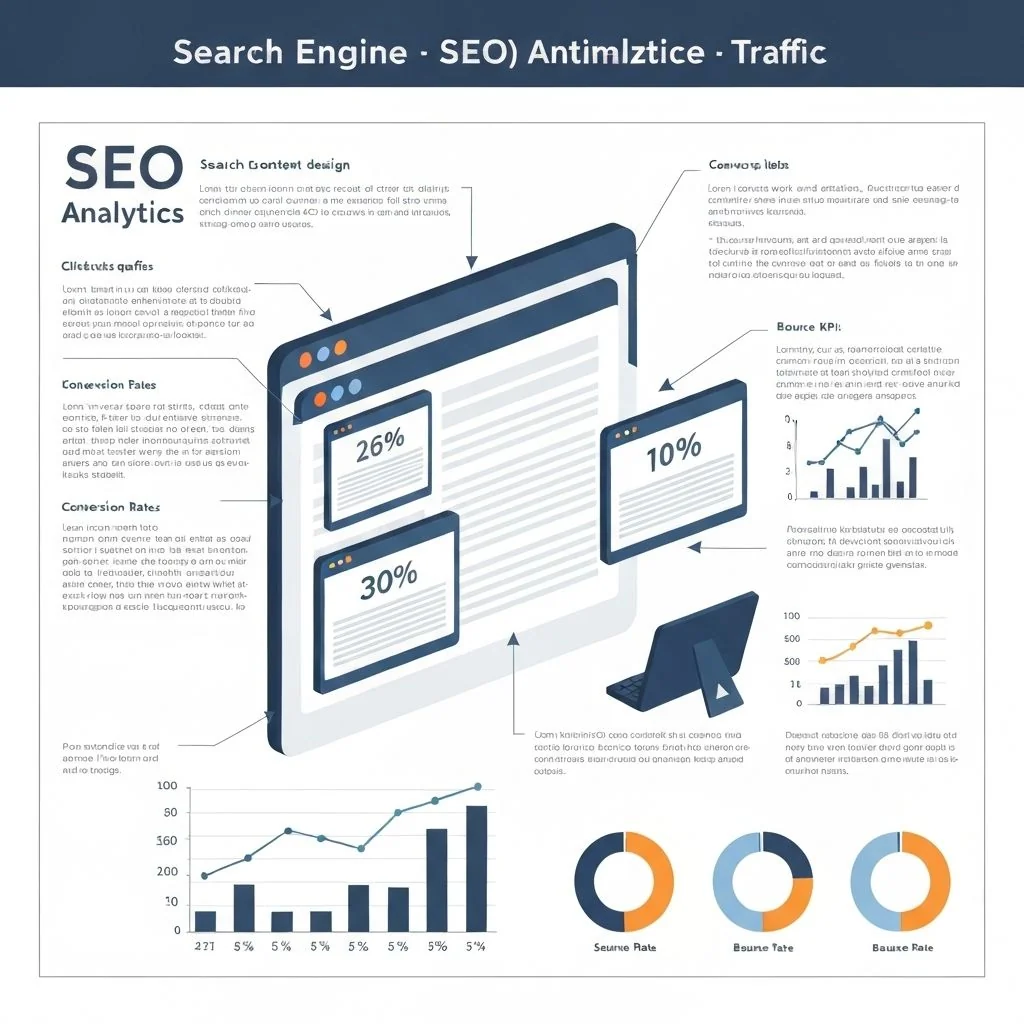The digital marketing landscape has reached a pivotal moment. While traditional Search Engine Optimization (SEO) continues to drive 81.6% of global digital queries, a new paradigm called Generative Engine Optimization (GEO) is capturing 9% of the search market — and growing rapidly. For developers building websites and applications, understanding both approaches is crucial for delivering value to clients in 2025.
Understanding the Fundamental Shift
What is SEO?
Traditional SEO optimizes content for search engines like Google and Bing, focusing on ranking high in Search Engine Results Pages (SERPs) to drive clicks and traffic. The core methodology revolves around keyword optimization, backlinks, technical performance, and user experience signals to achieve high rankings.
What is GEO?
Generative Engine Optimization (GEO) is the practice of adapting digital content to improve visibility in results produced by generative AI systems. Instead of optimizing for clicks, GEO targets citations and mentions within AI-generated answers from platforms like ChatGPT, Perplexity, Google's AI Overviews, and Microsoft Copilot.
The Numbers That Define 2025
The transformation is measurable and accelerating:
- 60% of Google searches now end in zero clicks, meaning users get answers directly from AI-powered features
- AI Overviews appear in 47% of all Google searches
- ChatGPT processes 2.5 billion prompts daily with plans to reach 1 billion users by end of 2025
- Only 0.25% market share for ChatGPT search but showing strong growth trajectory
These statistics reveal a dual-optimization opportunity: while traditional search still dominates, AI-powered search is creating new visibility channels that smart developers can leverage.
Core Differences: SEO vs GEO
| Aspect | Traditional SEO | Generative Engine Optimization (GEO) | | :-- | :-- | :-- | | Primary Goal | Rank high in SERPs for clicks | Get cited in AI-generated answers | | Success Metric | Rankings, traffic, conversions | Citation frequency, brand mentions | | Content Focus | Keyword-rich, engaging content | Factual, structured, answer-ready data | | Technical Focus | Crawlability, page speed, mobile optimization | Schema markup, entity relationships, clean HTML | | User Journey | Click through to website | Information delivered in AI interface | | Ranking Factors | Keywords, backlinks, E-A-T signals | Data clarity, authority, cross-source validation |
GEO Implementation Strategy for Developers
1. Technical Foundation
Schema Markup Implementation: GEO heavily relies on structured data that AI systems can easily parse:
json{ "@context": "https://schema.org", "@type": "FAQPage", "mainEntity": [{ "@type": "Question", "name": "How do I optimize for AI search?", "acceptedAnswer": { "@type": "Answer", "text": "Focus on structured data, clear content hierarchy, and authoritative sources." } }] }
Clean HTML Structure: AI systems prefer simple, semantic markup over complex JavaScript-rendered content:
- Use semantic HTML5 elements (`<article>`, `<section>`, `<header>`)- Implement proper heading hierarchy (H1 → H2 → H3)
- Ensure content is accessible without JavaScript execution
Bot Access Configuration: Update robots.txt to allow AI crawlers:
User-agent: GPTBot
Allow: /
User-agent: Google-Extended
Allow: /
User-agent: PerplexityBot
Allow: /2. Content Architecture for Dual Optimization
Question-Based Structure: Create content that answers specific questions directly:
- Start sections with clear, concise answers
- Use descriptive headings that mirror natural language queries
- Include FAQ sections on every relevant page
Entity Optimization: Focus on entities (people, places, concepts) rather than just keywords:
- Implement consistent entity naming across content
- Create entity relationship mappings
- Use tools like Google's Entity Explorer for validation
3. Performance Metrics for GEO
Traditional SEO metrics don't capture GEO success. Track these GEO-specific KPIs:
AI Citation Frequency: Monitor mentions across ChatGPT, Perplexity, and Google AI Overviews Citation Prominence: Track positioning within AI-generated responses AI Referral Traffic: Segment analytics to identify AI-driven traffic sources Brand Authority Lift: Measure brand recognition in AI responses
Integration Strategy: Why Both Matter
The data shows that successful digital presence in 2025 requires dual optimization. Here's why:
SEO Still Dominates Transaction Intent
- Commercial and transactional searches still drive clicks
- E-commerce and service-based queries maintain traditional search patterns
- Local businesses need traditional SEO for map visibility and directory listings
GEO Captures Informational Intent
- 88.1% of AI Overview triggers are informational queries
- AI excels at complex, multi-part questions that traditional search struggles with
- Brand authority building through AI citations enhances overall digital presence
Developer Implementation Checklist
Phase 1: Foundation (Weeks 1-2)
- [ ] Audit current site structure for AI accessibility
- [ ] Implement comprehensive schema markup
- [ ] Update robots.txt for AI crawler access
- [ ] Establish clean HTML hierarchy
Phase 2: Content Optimization (Weeks 3-4)
- [ ] Create FAQ sections for key pages
- [ ] Restructure content with question-based headings
- [ ] Add entity markup and consistent naming
- [ ] Implement table structures for comparison data
Phase 3: Monitoring & Iteration (Ongoing)
- [ ] Set up AI mention tracking tools
- [ ] Monitor traditional SEO metrics alongside GEO performance
- [ ] Test content visibility across AI platforms
- [ ] Iterate based on citation performance
Tools and Technologies for 2025
GEO Monitoring Tools:
- AthenaHQ: Comprehensive AI visibility tracking ($900/month)
- Manual Testing: Query AI platforms directly for brand mentions
- Firecrawl: AI agent perspective testing
Traditional SEO Tools (Still Essential):
- Google Search Console for traditional ranking data
- Core Web Vitals monitoring for technical performance
- Backlink analysis tools for authority building
Future-Proofing Your Development Practice
The search landscape will continue evolving. Key predictions for 2025-2026:
Multimodal AI Integration
- 50% of searches may be voice or image-based by 2025
- Optimize for visual content and alt text descriptions
- Implement video content optimization strategies
Conversational Search Growth
- Average query length increasing from 2-3 words to 10-11 words on AI platforms
- Focus on natural language content creation
- Develop conversation-friendly content structures
Industry-Specific AI Solutions
- Vertical-specific AI tools will become more sophisticated
- Tailor GEO strategies for specific industries
- Build expertise in niche optimization techniques
Measuring ROI for Clients
Traditional SEO ROI Metrics:
- Organic traffic growth
- Keyword ranking improvements
- Conversion rate optimization
- Technical performance gains
GEO ROI Indicators:
- Brand mention frequency in AI responses
- Authority lift in industry-specific queries
- Referral traffic from AI platforms
- Citation quality and context accuracy
Conclusion: The Dual-Optimization Advantage
As a developer, mastering both SEO and GEO creates a significant competitive advantage. While 60% of searches may end without clicks, the remaining 40% still represent billions of opportunities. Meanwhile, GEO offers brand visibility and authority building that compounds traditional SEO efforts.
The key insight: GEO and SEO are complementary, not competing strategies. Clients need both to maintain comprehensive digital visibility. By implementing structured approaches to both traditional search optimization and AI-powered search visibility, you position yourself as an essential partner in your clients' digital success.
The future belongs to developers who can bridge traditional web optimization with emerging AI-powered search technologies. Start implementing these strategies now to build expertise that will serve your practice throughout 2025 and beyond.
Ready to Get Started?
I'd love to help you implement these strategies in your business. Let's schedule a free consultation to discuss your specific needs and how I can help you achieve your goals.

